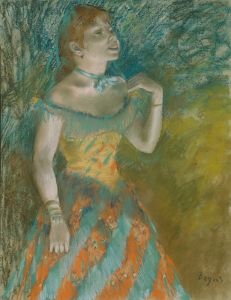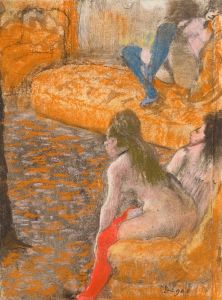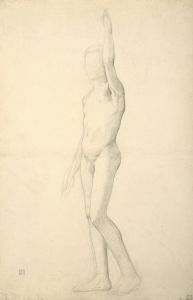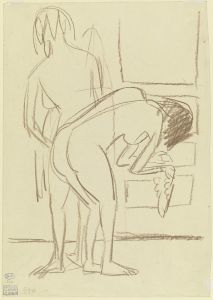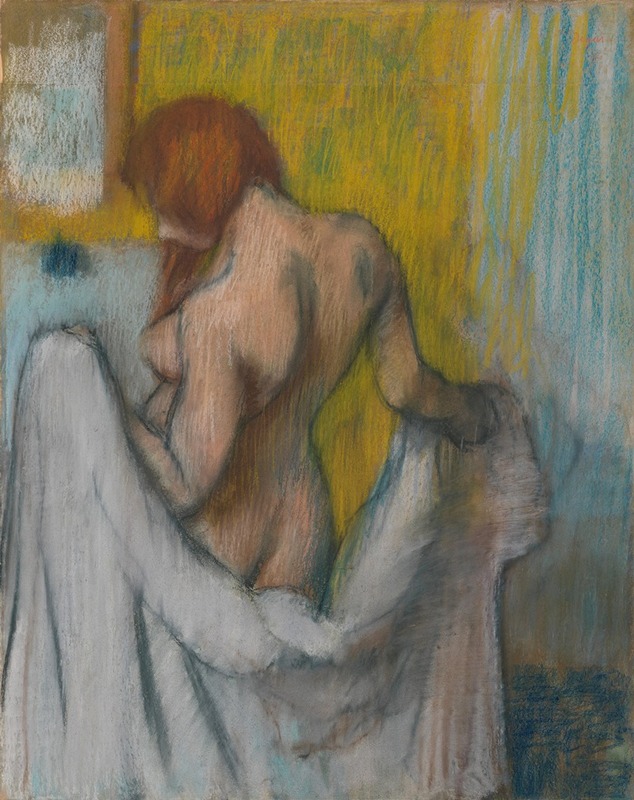
Woman with a Towel
A hand-painted replica of Edgar Degas’s masterpiece Woman with a Towel, meticulously crafted by professional artists to capture the true essence of the original. Each piece is created with museum-quality canvas and rare mineral pigments, carefully painted by experienced artists with delicate brushstrokes and rich, layered colors to perfectly recreate the texture of the original artwork. Unlike machine-printed reproductions, this hand-painted version brings the painting to life, infused with the artist’s emotions and skill in every stroke. Whether for personal collection or home decoration, it instantly elevates the artistic atmosphere of any space.
Edgar Degas, a prominent French artist associated with the Impressionist movement, is well-known for his innovative approach to capturing modern life, particularly through his depictions of ballet dancers, women at their toilette, and scenes of Parisian life. One of his works, "Woman with a Towel," exemplifies his interest in the intimate and private moments of everyday life, as well as his mastery in portraying the human form.
"Woman with a Towel" is a pastel drawing created by Degas in the late 19th century. This artwork is part of a series of works in which Degas explored the theme of women bathing or drying themselves, a subject that allowed him to study the human body in various poses and movements. Degas was fascinated by the natural and unguarded gestures of women in these private moments, and he sought to capture them with a sense of immediacy and realism.
The composition of "Woman with a Towel" is typical of Degas's style during this period. The woman is depicted in a candid pose, absorbed in the act of drying herself with a towel. Degas's use of pastel is particularly noteworthy; he employed this medium to achieve a soft, luminous quality that enhances the sense of intimacy in the scene. The pastel technique also allowed Degas to experiment with color and texture, creating a rich surface that conveys the tactile nature of the towel and the softness of the woman's skin.
Degas's approach to depicting the female form was both innovative and controversial. Unlike many of his contemporaries, who idealized the female nude, Degas chose to portray women in more naturalistic and sometimes unflattering poses. This focus on realism and the everyday aspects of women's lives was a departure from traditional representations and contributed to the modernity of his work. His interest in capturing the fleeting moments of modern life aligned with the broader goals of the Impressionist movement, which sought to depict contemporary subjects with a sense of immediacy and movement.
"Woman with a Towel" reflects Degas's deep understanding of anatomy and his ability to convey the weight and balance of the human body. The figure's pose is carefully constructed, with a sense of tension and relaxation that suggests movement. Degas's attention to detail and his skillful use of line and color create a dynamic composition that draws the viewer into the scene.
This artwork, like many of Degas's works, was influenced by his interest in photography and Japanese prints, both of which informed his compositional choices and his exploration of unconventional viewpoints. The cropping of the figure and the focus on a single moment in time are reminiscent of photographic techniques, while the flattened perspective and emphasis on pattern and line echo the aesthetics of Japanese art.
"Woman with a Towel" is housed in various collections, with versions of similar themes found in major museums around the world. Degas's exploration of the female form and his innovative use of pastel have left a lasting impact on the art world, influencing generations of artists who followed. His ability to capture the essence of modern life with sensitivity and precision continues to be celebrated and studied by art enthusiasts and scholars alike.







